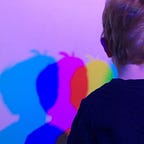Designing the New Internet
It’s people that will shape the future of the internet. So what do we want it to be?
I first logged on to the internet back in the early days of the web. A hand-me-down computer from a programmer uncle meant that Christmas of ’94 was a revelation; a new frontier of knowledge opened up in-front of me. The sum of human understanding was being amassed, and was right at my fingertips: graphic design, politics, music, race car engineering… it was all there to be absorbed, pored over, discussed, contributed to. And that, to me, is the essence of the internet. A meeting of like minded individuals; teaching, learning, collaborating, trading, connecting, sharing. A place of science, of wonder, exploration, and unconstrained thought. A space where all information is equal, even information published by a teenager in a Scottish fishing town, hacking away on a cast-off 386.
The internet took me to a career in the music industry where I’ve spent the best part of the last 15 years. I’ve built independent labels, high-resolution music services, and have helped design new ways for people to experience and interact with music in their home; all thanks to the power of the computer network.
And the web, for a fleeting moment, seemed truly revolutionary for music. Suddenly layers of middlemen evaporated and the gap between the artist and their audience became vanishingly small: music distribution was becoming accessible to everyone.
But like the same situations faced in many industries, the prospect of fair and open access to music — to information — faces strangulation from corporations deploying technology and the brute strength of centralisation to control supply chains and the ability of individuals to create and distribute data.
It was just this kind of challenge that led me to the find other people working to solve the problem at its core: rebuilding the web from the ground up. Little did I know that the best of them were right on my doorstep!
So I’m thrilled to be joining the MaidSafe team as UX/UI designer, to lend a hand in building the solution.
It’s of course a privilege, but also a huge responsibility. The nature of the web as we now know it has given an inordinate amount of power to bureaucracies and the platforms that it is built upon. Sidestepping these structures gives us a unique opportunity to rebuild the web with the individual at the centre; the network serving the needs of humans, not users serving the needs of corporations. How’s that for a design brief?
With the SAFE Network, security and privacy will come as standard, but its implications go way beyond that. How people use and experience the web will be transformed through decentralisation, and being handed absolute control over their personal data.
When we no longer pay for technology with our personal information and our attention, it allows something remarkable: the worth of a product is based on its utility — what it can do for society — not on its ability to exploit people’s intimate data.
Portable, ownable data means competition between design solutions, not on how effectively customers can be locked in and commoditised. This is the start of a renaissance in user experience design, where businesses, developers, and designers sole focus must be on meeting the needs of humans.
It’s people that will shape the future of the internet, not corporations, nor governments. So what do we want it to be?
